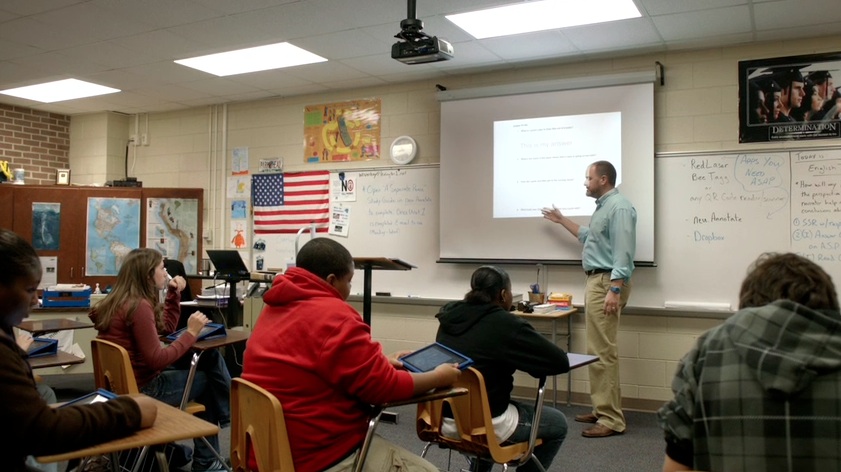Apple, education, and teaching the teachers

The Apple ][ was the first computer in so many classrooms across the country: For many, it was the device that introduced a generation to the digital age.
Unfortunately, that Apple ][ in the back of the room wasn't used for all that much. It's "state of the art" educational software included Oregon Trail, Typing Tutor, and other digital replacements for the venerable flash cards. Oh, and, the games the more, uh, creative amongst us managed to play.
The promise of Apple and education
Way back when, I did my Master's thesis on the topic of computers in education, centering on the Macintosh and HyperCard. My hypotheses was that computers in the classroom wouldn't make an impact until they were either one machine to one student (or, if necessary, shared where costs were prohibitive). They would also need to be combined with a new a type of curriculum — one that would take advantage of a time when it would be possible for anyone to get the answer to any question with a factual answer. With a change in both tools and curriculum, education could seriously benefit from the addition of computers to the classroom.
(To be honest, I think I successfully defended my thesis mostly because no one had the slightest idea what I was talking about.)
Chromebook or iPad?
Fast forward to today's landscape: There are many options for teachers and schools who want computers in the classroom.
On one hand, Chromebooks offer traditional keyboards, a full web experience, multi-user options, and collaborative features. They come in low cost, easy-to-manage packages. They sound compelling. But there's another side of the story. Chromebooks, as good as they are these days don't deliver the richest or the best experience for learning or teaching.
For a long time, Apple positioned iPad as the ultimate classroom tool, but it was lacking in too many features needed for success. There was no way to share devices among students. Costs were high. Moreover, the tools to create innovative curriculum to unlock the tablet's full potential didn't really exist, and what was available couldn't be used by the people who needed to use it most — the very people where knowledge lives and thrives — teachers.
iMore offers spot-on advice and guidance from our team of experts, with decades of Apple device experience to lean on. Learn more with iMore!
But today's iPad, and the overall iOS platform, isn't your father's tablet.
The (new) promise of Apple and education
Apple has added amazing content creation tools for the iPad, specifically targeting them to teachers so that they can create new courseware for learning. With iOS 9.3, there are also new tools for classroom management, student sharing, and facilitated learning. That means educational institutions can (at least, in theory) look beyond device costs.
It's easy to look at the simple analysis of Chromebook price, or familiar form factor. As Oscar Wilde said, "a cynic knows the price of everything, and the value of nothing". And as long as there are budgets, price as a driver will always remain.
But when we talk about our children's education — what they can and will learn from computers — educators and decision-makers in the education space need to go beyond the cynicism of price alone.
Teaching the teachers
As good as iPad's experience is, it's still somewhat of a well-kept secret how it might be deployed, and used. If Apple wants to unlock the potential of iPad in the classroom, the company needs to teach its own lesson in a clear voice: Here's how the iPad can change your students' learning experience. It's a message that needs to go directly to educators, and to those who hold the purse strings for them.
It's time to show today's generation of teachers, who were nurtured on the Apple ][, how to seed the next generation of Apple computers in the classroom.
I’ve covered the personal technology beat for more than two decades at places like Gartner, Jupiter Research and Altimeter Group. I’ve also had the fun of contributing my $.02 on the topic at Computerworld, Engadget, Macworld, SlashGear and now iMore. Most recently I spent a few years at Apple as Sr. Director of Worldwide Product Marketing. On Twitter I’m an unverified @gartenberg. I still own some Apple stock.

